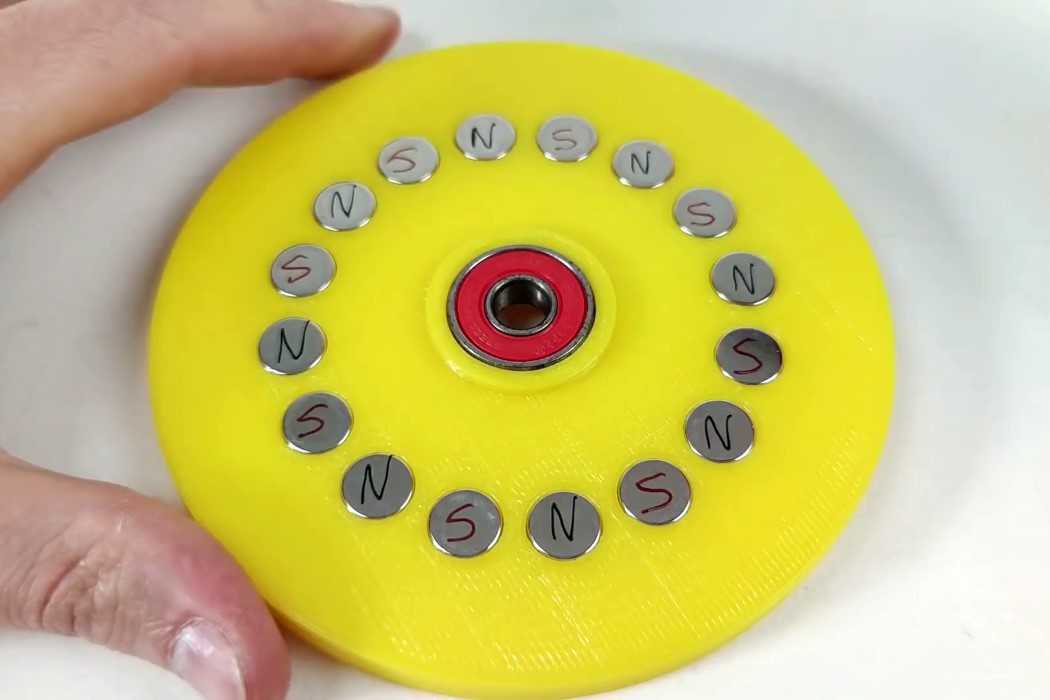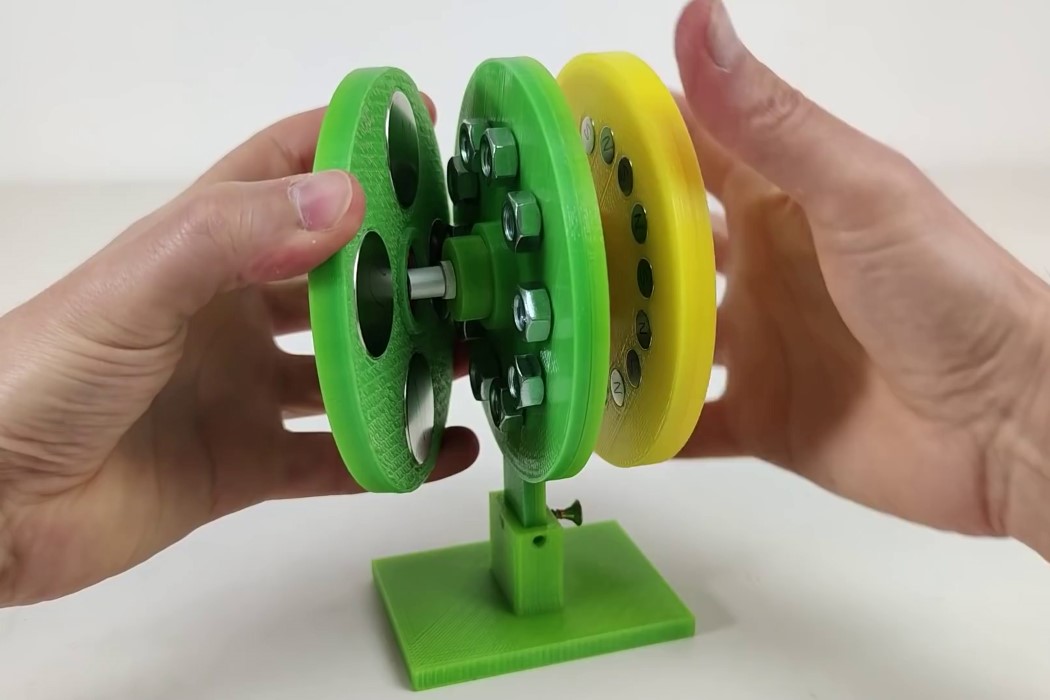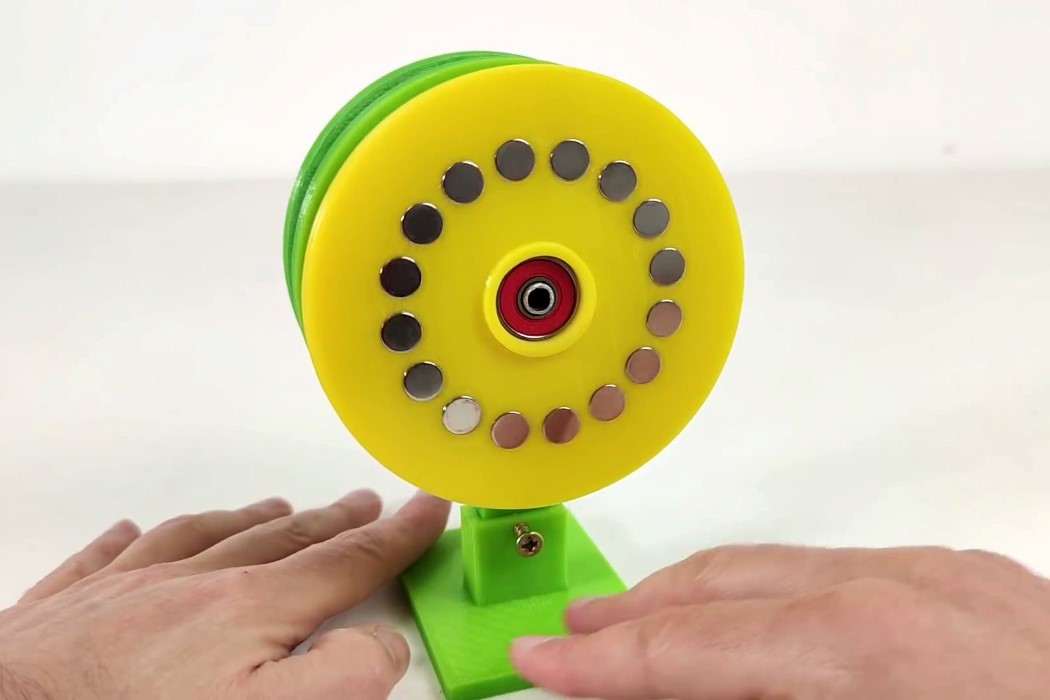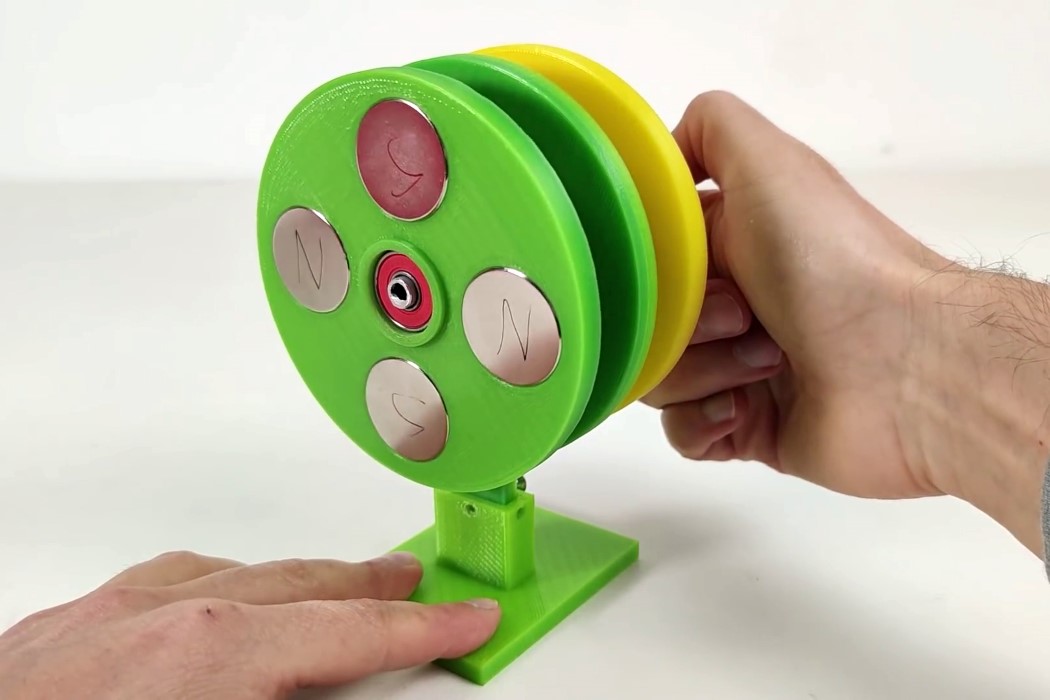You see gears in action and they’re pretty easy to fathom. Metal wheels with interlocking teeth – rotate one wheel and the other wheel rotates in the opposite direction. Change the size of one wheel and it affects the speed at which the other wheel rotates. That’s basically how any simple gearbox on an automobile/bicycle works, translating rotations from a motor or your feet into rotating wheels. What happens when you replace the teeth with magnets? The video above wonderfully explains how gears can work without the mechanical action of interlocking teeth… in fact, they can work without even touching each other! These magnetic gears are pretty interesting and whimsical to look at!

YouTuber Magnetic Games shows how these gears work by putting them together from scratch. With 3 3D-printed wheels, the apparatus comes to life. One wheel holds 32 magnets (16 on each side), while the other houses 8 magnets (4 on each side). A third stationary wheel comes with bolts attached in each hole (helping the magnetic attraction pass from one wheel to another), and the apparatus is set up with the wheels on a common axle.

Rotating one wheel causes the other to turn in the opposite direction. The wheel with more magnets rotates at a slower pace, while the wheel with less magnets rotates with a higher speed (sort of like a larger gear and smaller gear). Obviously, the magnetic resistance isn’t comparable to the physical resistance of metal gears (you couldn’t really use these in a car or bicycle), but it DOES highlight a unique relationship between gears and magnets – something I knew nothing of until now! Plus, think about it this way, less physical contact = less wear-and-tear…



Via TheAwesomer
0 Commentaires